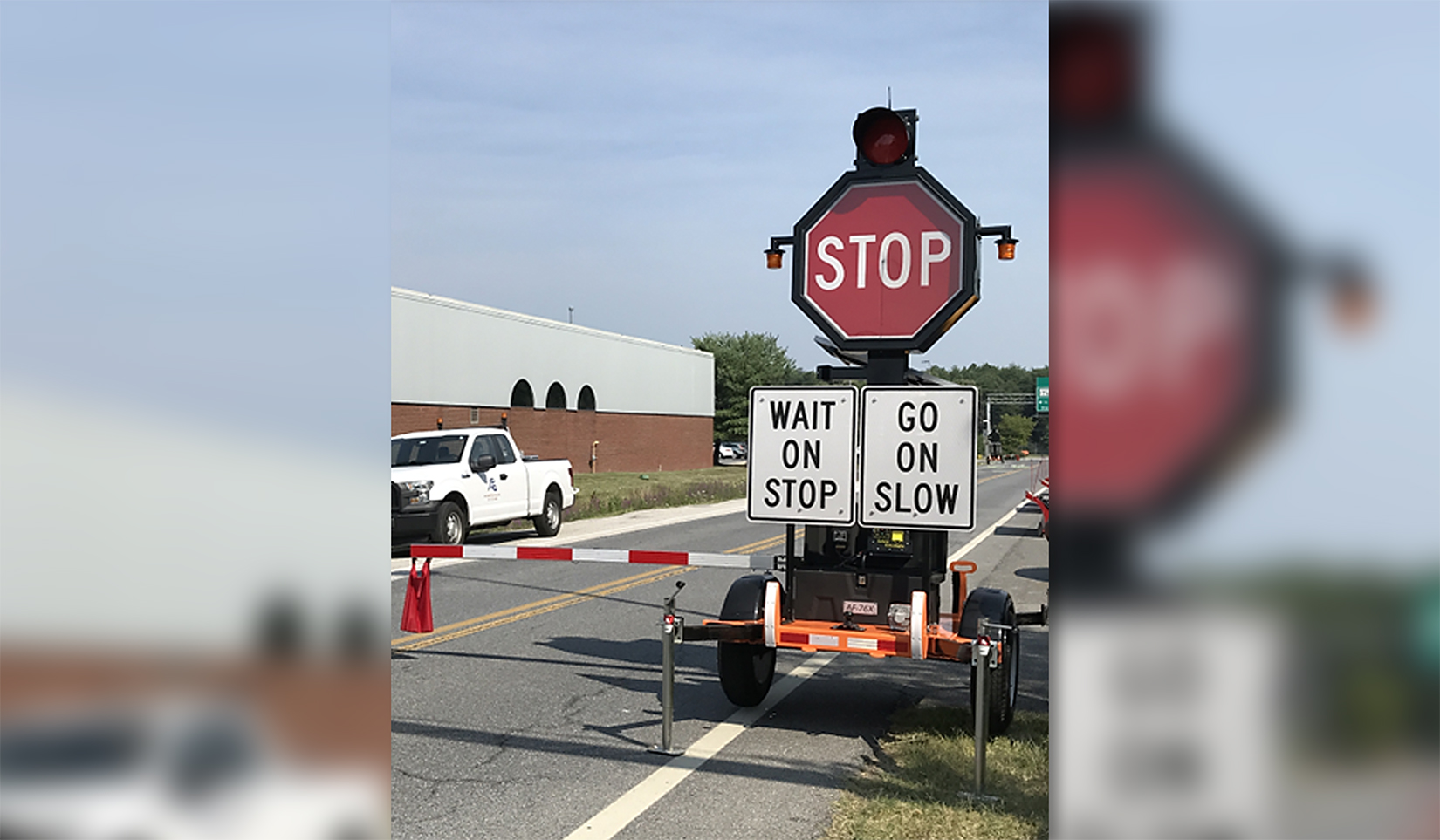
An example of the Automated Flagger Assistance Device being used for training in Hanover, MD. (MDOT State Highway Administration)
Each day in Maryland there are 300 highway construction, maintenance and utility work zones with more than 1,000 workers. From 2019-2023, there were 7,110 work zone-related crashes in Maryland – an average of more than 1,400 each year – resulting in 2,587 injuries and 45 fatalities. In 2024, Maryland had more than 1,300 work zone crashes. As of mid-March this year, there have been 142 work zone crashes statewide.
Many of these projects include flagging operations, where workers are positioned at either end of a two-lane highway and alternate traffic while work is being done. Sadly, each year, flaggers experience injury or even death while performing their job.
The Maryland Department of Transportation State Highway Administration continues to pursue innovative ways to make work zones safer. In 2018, State Highway piloted the use of an Automated Flagger Assistance Device (AFAD) at a drainage project on MD 807 (Bedford Road) at Patmar Drive, north of Cumberland in Allegany County. It was a successful implementation of the technology, which is used on roads contingent on traffic volumes, posted speed limits and other things like sight distance.
Workers use a controller to activate the AFAD system during flagging operations, monitoring traffic queue lengths and manually adjusting the electronic device to reduce congestion at the work zone.
The portable flagging stations remove the need to have human flaggers on the road while providing motorists with clear guidance through temporary traffic control zones. This keeps workers out of harm’s way.
The State Highway Administration is increasing the usage of this technology in areas across the state where speed and traffic volumes are lower.
Charlie Gischlar is Deputy Director of Communications at the Maryland Department of Transportation State Highway Administration.

